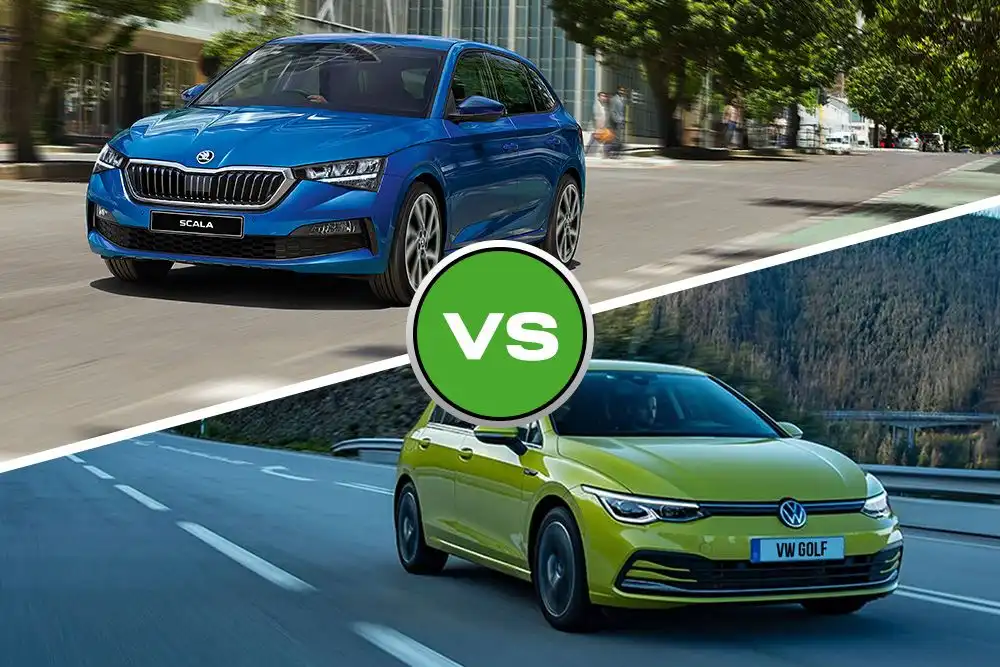Back in 1991, Skoda became a part of Volkswagen AG, known internationally as the Volkswagen Group (that also includes its nameship Volkswagen brand), with the parent company gradually increasing its share until it eventually became the sole owner in 2000.
Fun fact: started in 1925, Skoda is actually the oldest carmaker of all the brands owned by the Volkswagen Group.
Early on in its acquisition, Volkswagen Group took the revolutionary step of introducing a platform strategy, enabling brands it held under the umbrella at that time – including Audi, Seat, Skoda and Volkswagen – to use each other’s parts. And thus, vehicles from Skoda and Volkswagen of the same class are built on mechanically similar underpinnings, or ‘platforms’ and often also share some of the same parts.
In this regard, the Skoda Fabia is mechanically similar to the Volkswagen Polo (VW Polo). However this is not to say they are exactly the same, as even if were based off the same platform, the overall length and width of the mechanical ‘skeleton’ that sits on top of it can be altered as required. Choice of engine and parts may also differ between manufacturers, not to mention exterior and interior design.
The platform sharing strategy has been beneficial for Skoda, especially in the early year after joining the Volkswagen Group, considerably expanding its product range. Skoda needed to be transformed into a quality and client-oriented organisation making cars that represented value for money, so Volkswagen AG also invested heavily in its R&D, technology, marketing and management, with the results of its success seen in much of what is produced today.
The Skoda Fabia comes in both hatchback and wagon models with entry level variants split by manual/auto transmission, and a higher specified Monte Carlo. The VW Polo offers four variants of only hatchbacks.
Is the Skoda Fabia cheaper than the VW Polo?
When comparing prices, it is fairest to match the manual and auto transmission of the entry level variants. Based on Manufacturer’s Suggested Retail Price (MSRP), the manual variants of each: The Skoda Fabia 70 TSI – $17,790 vs. VW Polo 70 TSI Trendline – $18,990 (both 1.0L, 5 speed manual).
And for the automatic variants: Skoda Fabia 81 TSI – $20,790 vs. VW Polo 70 TSI Trendline – $21,490 (both 1.0L, 7 speed auto).
It can be seen that in both cases the Skoda Fabia beats the VW Polo in price.
Let’s take a closer look at the Skoda Fabia 70 TSI, and some places where it differs from its “equivalent” the VW Polo 70 TSI Trendline.
The overall dimensions of the Skoda Fabia measures in at 3997mm long, 1732mm wide , and 1467mm high. The VW Polo is 4053mm long, 1751mm wide and 1446mm high. So apart from their design styles aside, the VW Polo appears slightly lower and longer, whereas the Fabia cuts a more robust shape due to a slightly more compact yet taller size.
The Skoda Fabia sports a bolder look with a new, more prominent front grille as well as a new front and rear bumper design, new headlamps. Optional LED lighting (both head and tail lights) and front fog lights are also available for that extra wow factor as well as added safety.
Other notable features such as surround sound speakers, and split folding rear seat backrest (60/40) are standard in both the Fabia and Polo. However, Skoda offers a few extra touches as part of its Simply Clever design concept, such as a ticket holder and an umbrella under the front seat. There’s also a net securing system, flexible storage compartment, and a waste bin in the boot.
Boot space in Skoda Fabia is 330L with rear seats upright and 1150L with rear seats folded down. This is comparable to that of the VW Polo with a capacity of 351L and 1125L respectively.
Modern safety features are included as standard in the Fabia, such as six airbags and 2 Isofix child seat anchorage points, as well as driver assist systems like adaptive cruise control, front assist with emergency brake (to prevent front end collisions), electronic stability control (with Hill Hold control), anti-lock braking system, and anti-slip regulation.
Looking under the hood, there’s no surprise to find that the Fabia and Polo are nearly identical performance-wise, as they are based on the same engine.
| Skoda Fabia 70 TSI | VW Polo 70 TSI Trendline | |
| Cylinders / Displacement (cm3) | 3/999 | 3/999 |
| Max Output (kW / rpm) | 70 / 5,000-5,500 | 70 / 5,000-5,500 |
| Max Torque (Nm / rpm) | 160 /1,500-3,500 | 175 /2,000-3,500 |
| Acceleration 0-100 km/h (s) | 10.8 | 10.8 |
| Combined fuel consumption (L/km) | 4.5 | 4.8 |
| CO2 emission (g/km) | 104 | 110 |
So it can be seen that the Fabia has much of the same offerings as standard as the Polo (with the Fabia even doing better in some aspects), meaning that the cheaper Skoda Fabia does indeed represent good value-for-money.







